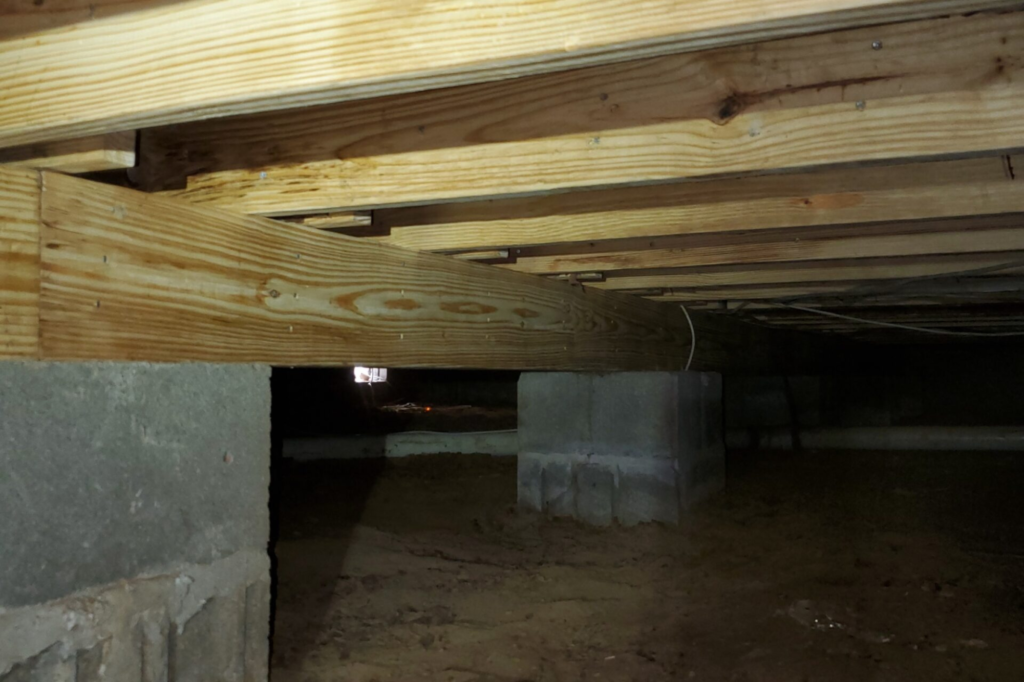Foundation cracks can occur due to a myriad of factors, including water damage, soil movement induced by temperature changes, insufficiently deep footings, and even intrusive plant roots. The soil type and conditions around your house play an essential role, too, with clay soils causing instability due to expansion and contraction and sandy soils leading to uneven loading issues. Weather conditions such as temperature fluctuations, excessive rainfall, strong winds, droughts, and frost can exacerbate these problems. Addressing these problems requires solutions such as regular inspections, utilizing professional help for major items, and creating effective drainage systems. Unpack more of this information, and you’ll have the solutions at your fingertips.
Key Takeaways
- Foundations crack due to reasons like water damage, hydrostatic pressure, temperature fluctuations, vegetation impact, and poor construction practices.
- Soil conditions significantly affect cracking, with clay and sandy soils, as well as improper soil compaction during construction, increasing the risk.
- Weather conditions such as temperature changes, frost, excessive rain, high winds, and droughts can lead to foundation cracking.
- Regular inspections, crack injection with sealants, underpinning, and foundation stabilization techniques like push piers can repair cracks.
- To prevent cracks, establish proper drainage systems like land grading and French drains to avoid water accumulation near foundations.
Understanding Foundation Cracks
While foundation cracks may seem like a minor aesthetic issue, they can, in fact, pose significant risks to the structural integrity of your home or building. These cracks, varying in size and shape, are far from being merely cosmetic concerns. They can indicate potential structural threats, which, if left untreated, can lead to severe damage.
To manage foundation cracks effectively, you need to understand their importance. They aren’t just blemishes on your walls; they can be symptoms of deeper, more serious issues. For instance, they might signal ongoing soil movement beneath your house, or they might suggest water damage from poor drainage.
It’s essential to identify foundation cracks early, as they can quickly evolve from small fissures into gaping fractures if ignored. This early identification allows you to apply the appropriate treatment, preventing further damage.
If you overlook these signs, you might find yourself dealing with a much larger – and costlier – structural problem down the road.
Common Causes of Cracks
Although seemingly minor at first glance, foundation cracks can be a telltale sign of underlying issues. One common cause is water damage. Poor drainage or gutters can lead to water accumulation near your foundation, causing cracks to form. Hydrostatic pressure, which pushes against your foundation walls, can exacerbate this.
Temperature fluctuations also play a significant role. Freezing and thawing cycles, as well as seasonal changes, can cause soil movement, which leads to cracks. Similarly, tree roots and vegetation growing near the foundation can cause soil shrinkage, resulting in cracks.
Poor construction practices, such as improper footing depth, lack of reinforcement, or low-quality materials, are also common culprits in structural issues.
Finally, natural wear and tear over time can cause your foundation to settle and small cracks to form, especially in older buildings. If you’re experiencing these signs in Virginia, consider scheduling a foundation repair Richmond VA, inspection to assess structural integrity.
The Impact of Soil Conditions
Given their considerable role, soil conditions around your foundation are a critical factor to evaluate. Different types of soil have unique properties that can impact your foundation’s stability.
Clay soils, for instance, expand when wet and contract when dry, causing soil movement that can lead to cracks. On the other hand, sandy soils are prone to shifting and can cause uneven loading and settlement.
Another major concern is improper soil compaction during construction. If the soil isn’t compacted sufficiently, it may settle over time, causing your foundation to move and eventually crack.
Erosion and soil washout can also lead to similar problems by creating voids beneath your foundation.
Moreover, the presence of organic matter in the soil can increase its compressibility, leading to settlement over time. Soil with high organic content also tends to retain more water, which can cause swelling and shrinkage cycles that stress your foundation.
Therefore, understanding your soil type and ensuring proper soil preparation during construction can greatly reduce the risk of foundation cracks. If you suspect soil-related issues, consider consulting with a soil engineer or a Richmond VA foundation repair professional.
If you suspect soil-related issues, consider consulting with a soil engineer or a foundation repair professional.

How Weather Influences Cracking
After considering soil conditions, it’s equally important to understand how weather can influence foundation cracking. Weather patterns play a significant role in the stability of your home’s foundation.
Temperature fluctuations induce expansion and contraction in the ground. In warm weather, the soil expands and pushes against the foundation. Conversely, in cold weather, the soil contracts, creating gaps that can cause the foundation to move or settle. This process is called frost heave, and it can lead to severe cracking if the foundation isn’t designed to withstand these forces.
Rain is another culprit. Excessive water can oversaturate the soil around your foundation, increasing the hydrostatic pressure against the foundation walls. This pressure can cause cracks to form, especially if the drainage system is inadequate.
Moreover, consistently high winds can erode the soil around the foundation over time, leading to instability.
In regions prone to drought, the lack of moisture can cause soil shrinkage, creating gaps where the foundation can shift and crack.
Understanding these factors is essential for maintaining the integrity of your foundation. Always consider the local climate when evaluating your foundation’s health, and if you need help, foundation repair services Richmond VA are available to assess weather-related impacts.
Repairing and Preventing Cracks
Five key strategies can help homeowners repair and prevent foundation cracks.
First, regularly inspect your foundation. Catching issues early can prevent more severe problems later.
Second, consider crack injection for minor issues. This process involves filling the crack with a sealant, such as epoxy or polyurethane. It’s a simple solution for hairline cracks but won’t suffice for larger ones.
Third, underpinning might be necessary for substantial cracks. This technique strengthens your foundation by adding extra support underneath. It’s a more complex process and may require professional help.
Fourth, foundation stabilization techniques can address soil-related issues. Techniques such as installing push piers or slab jacking can lift and stabilize a sinking foundation.
Finally, guarantee proper drainage around your home. Accumulated water near your foundation can cause serious damage. Land grading, maintaining gutters, and installing drainage systems like a French drain can help keep water away.
Professional Solutions for Foundation Issues
Even the most diligent homeowners can find themselves facing foundation issues that require professional intervention.
Don’t be overwhelmed; there are several professional solutions available to manage these problems effectively.
For minor cracks, pros may use crack injection, which involves filling and sealing the cracks with epoxy or polyurethane. This method is quick and cost-effective.
However, if the damage is severe, underpinning might be recommended. This process strengthens an existing foundation by extending it deeper into the ground or by reinforcing it with additional supports. It’s more expensive but guarantees long-term stability.
Another option is foundation stabilization. This involves using tools like helical piers, push piers, or slabjacking to lift and stabilize a sinking foundation. This can rectify issues like uneven floors and misaligned doors or windows.
Lastly, waterproofing and installing drainage systems like sump pumps or French drains can help manage water pressure around your foundation, preventing further damage. For residents in need of expert help, Richmond VA foundation repair services offer long-term structural solutions.
These solutions offer an extensive approach to managing foundation issues, guaranteeing your home remains safe and secure.
In Summary
So, you’ve explored the world of foundation cracks. They’re not just a cosmetic issue but a sign of potential structural damage. Soil conditions, weather, and poor construction can all contribute. But don’t panic – there are solutions. From repairing cracks to preventing them, professional help is available. The key is to act swiftly. Your property’s integrity and value depend on it. Now, you’re equipped with the knowledge to protect your home’s health—Tiger C Construction is here to provide expert foundation repair services when you need them most.
